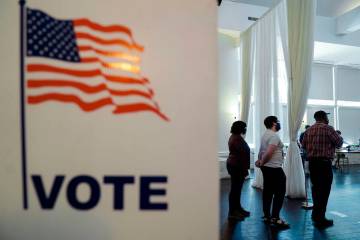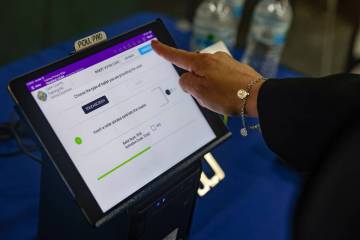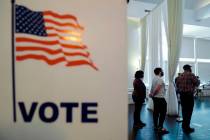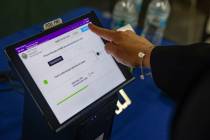Nevada unemployment office didn’t learn from Great Recession, experts say
An overwhelmed unemployment office struggling to process claims, answer phones and roll out extra benefits — Nevada has been here before.
Instead of paying out new benefits to filers such as an additional $600 a week under the CARES Act, the state unemployment office was paying an extra $25 a week more than 10 years ago.
During the Great Recession, Nevada and other states found it difficult to create a system to pay the relatively small addition on claimants’ paychecks, and experts are now finding not much has changed.
“The shocking thing is we didn’t learn our lesson during the Great Recession,” said Alix Gould-Werth, director of family economic security policy at the Washington Center for Equitable Growth. “We saw the jammed phone lines, the websites go down … because policy makers didn’t address these underlying structural problems, we ended up entering the coronavirus recession with this unprepared fragile unemployment compensation system and we’re being left to shore it up with last-minute fixes.”
Frustration has been mounting among the state’s record number of unemployed workers as they struggle to reach the Department of Employment, Training and Rehabilitation by phone and email.
$600 a week extra
One bright spot is claimants have been able to see the additional $600 a week in their paychecks — even the retroactive payment for the week ending April 4 — but only after weeks of no clear answer on when the payments would kick in.
Las Vegan Alan Scialpi said he was beginning to lose his patience, even after receiving his first $600 payment, since he didn’t see any retroactive payments.
“It seemed to me like, if nobody complained, then they would keep that money,” he said.
DETR spokeswoman Rosa Mendez said the office has started paying out the additional $600 as well as the retroactive payments. The U.S. Department of Labor announced last week that all 50 states are now paying the additional funds, one month after President Donald Trump signed the CARES Act.
Double take
When Congress passed a stimulus plan under then-President Barack Obama in February 2009, Nevada had the fifth-highest unemployment rate of any state, according to the Bureau of Labor Statistics.
The bill included the Federal Additional Compensation, or FAC, program, which gave filers a $25 increase to their unemployment insurance benefit checks each week. The program operated through the end of 2010.
Matt Weidinger of think tank American Enterprise Institute and former deputy staff director of the House Committee on Ways and Means said the CARES Act’s extra $600 payment is really a “supersize version” of the FAC program.
“We had experts look at (FAC) after the fact and say, ‘You know what, that was really complicated and very difficult for states to administer,’ ” he said. “It came at exactly the wrong time because, just like now, you have a massive surge in demand for regular benefits.”
A 2013 study by the Upjohn Institute for Employment Research found that adding the FAC program into states’ benefits systems “was either impossible or would have resulted in great delays.”
It found that Nevada tried juggling a record number of claims and implementing the FAC program by hiring new staff, reassigning employees from other offices to support DETR and increasing staff overtime hours.
State officials told Upjohn that administering the extra $25 as a separate payment “substantially increased the administrative workload,” and testing the new system to make sure it was accurately making payments was also time-consuming.
DETR said in an emailed statement that the FAC program was introduced using an “old legacy UI system known as GUIDE” that was built in the late ’60s, early ’70s. It is not the same system we operate in now.” An update was made in 2013.
Laundry list
Like in 2009, DETR has taken steps to meet what’s been an unprecedented number of claims.
There were 42,541 initial claims for unemployment insurance for the week ending April 25, up nearly 8 percent compared to the previous week. A total of 412,211 initial claims have been filed this year through the week ended April 25, according to DETR.
The office hired additional staff, reassigned workers from other offices to help and contracted with a third-party call center, though claimants have called the center a “waste.”
Of the three major unemployment provisions of the CARES Act, the additional $600 has rolled out quicker than the other programs: a 13-week extension for those who have exhausted their benefits, and unemployment insurance for independent contractors, self-employed and gig workers.
National Academy of Social Insurance Senior Fellow Stephen Wandner said there was “no way” for states to plan ahead.
“For example, in past recessions it usually takes three or four months for unemployment (to) increase steadily to a very high level,” he said. “Things exploded in March … so fast that it’s a game of catch-up that will take awhile.”
Contact Subrina Hudson at shudson@reviewjournal.com or 702-383-0340. Follow @SubrinaH on Twitter.











































